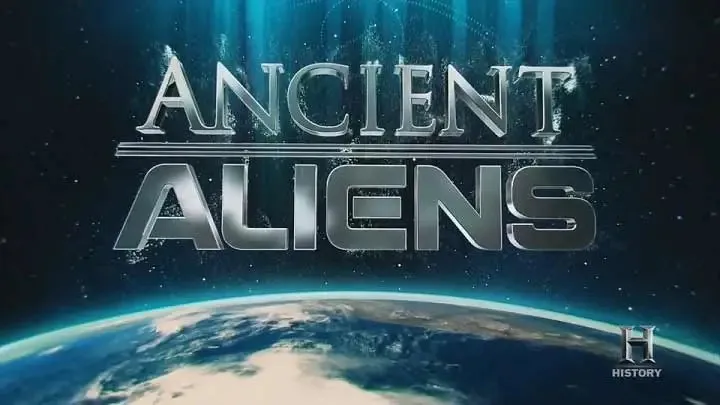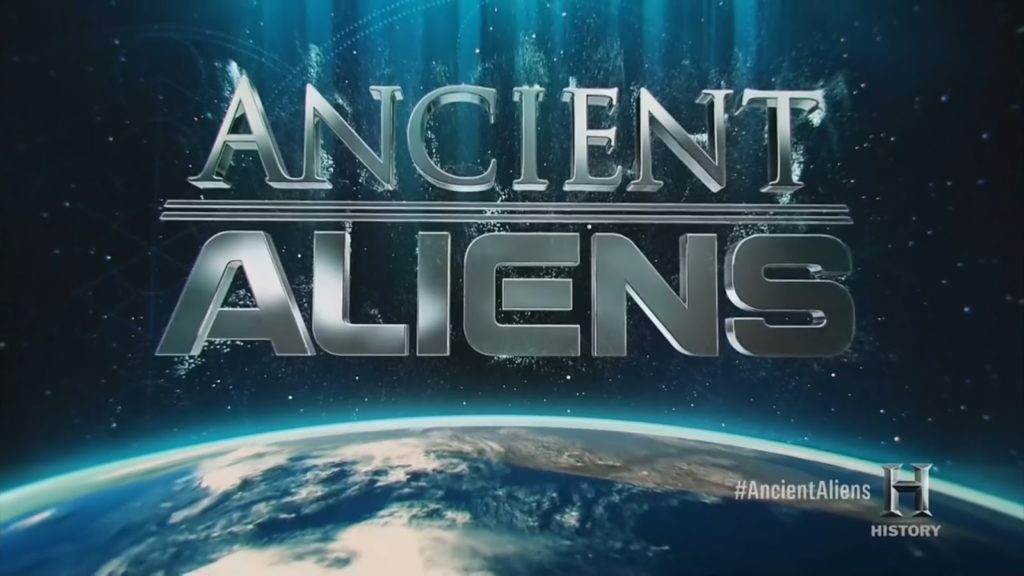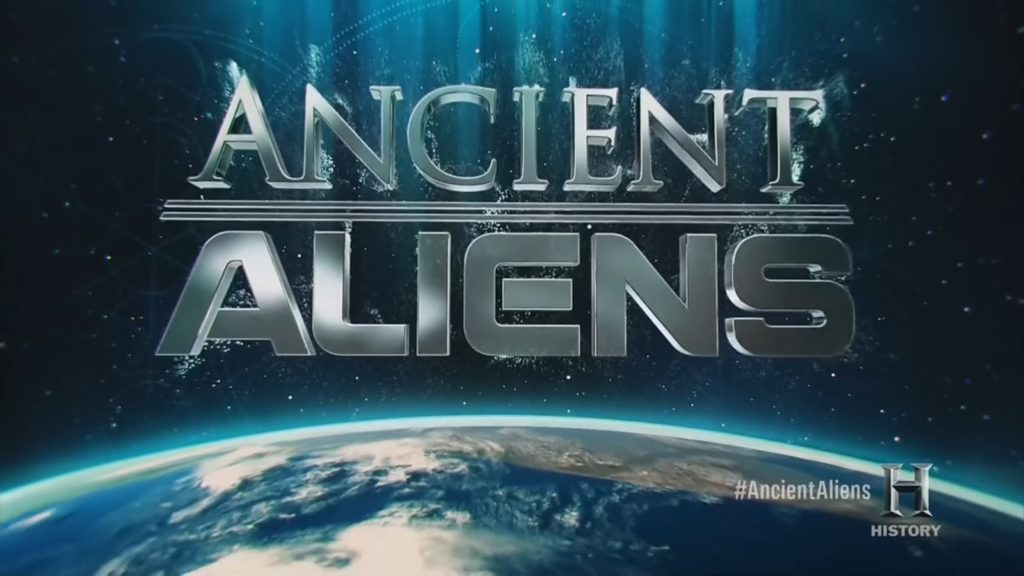Ancient Aliens – S19 E17 | The New UFO Hunters – In the dawn of the 21st century, whispers about UFOs began echoing louder than ever before. What was once brushed off, confined to dimly-lit basements and the wild imaginations of conspiracy theorists, suddenly found its way into mainstream discussions and coffee table chats. These otherworldly speculations had, for the longest time, been overshadowed by skepticism, but now, the tables were turning.
As the years rolled on, popular culture and scientific forums alike became alight with heated debates and contemplations on the existence of these unidentified flying objects. The world was witnessing a new era; an age where UFO enthusiasts weren’t just daydreamers gazing at the stars. They were tech-savvy individuals, armed with cutting-edge equipment and a burning passion to decode the unknown. Their mission? To challenge preconceived notions, to dive deeper than any had before, and to uncover truths that lay hidden in the vast expanse of our universe.
And it wasn’t just the individuals. Governments, those behemoths of bureaucracy, usually tight-lipped about phenomena they couldn’t explain, started to shift their stance. Across continents and nations, official bodies started pulling back the curtains, revealing investigations and acknowledging the aerial wonders they had observed.
Every disclosure, each meticulously recorded sighting, brought humanity one step closer to unraveling the complex tapestry of events that unfurled in the boundless canopy above. The quest to understand our place in the universe, and the mysteries it holds, had truly begun.
Ancient Aliens – S19 E17 | The New UFO Hunters
In the dawn of the 21st century, whispers about UFOs began echoing louder than ever before. What was once brushed off, confined to dimly-lit basements and the wild imaginations of conspiracy theorists, suddenly found its way into mainstream discussions and coffee table chats. These otherworldly speculations had, for the longest time, been overshadowed by skepticism, but now, the tables were turning.
As the years rolled on, popular culture and scientific forums alike became alight with heated debates and contemplations on the existence of these unidentified flying objects. The world was witnessing a new era; an age where UFO enthusiasts weren’t just daydreamers gazing at the stars. They were tech-savvy individuals, armed with cutting-edge equipment and a burning passion to decode the unknown. Their mission? To challenge preconceived notions, to dive deeper than any had before, and to uncover truths that lay hidden in the vast expanse of our universe.
What Exactly are UFOs?
UFOs, short for unidentified flying objects, refer to any aerial phenomenon that cannot be immediately identified or explained. Some associate UFOs with potential extraterrestrial spacecraft, while others believe they may be secret military operations or even natural events that are misunderstood. The term was coined in the 1950s during a wave of UFO sightings, but accounts of mysterious objects in the skies go back much further in history. While some sightings turn out to have prosaic explanations, a small percentage remains unsolved and captivates the imagination of ufologists seeking evidence of alien life.
What are UFOs? They are a truly confounding puzzle with seemingly endless possibilities. Classified government documents indicate that even national security agencies cannot fully account for all UFO cases. The phenomenon spans generations and cultures, with consistent patterns in sighting reports globally. As technology advances, more sophisticated tools emerge for deeply analyzing these enigmas of the skies. One thing is certain – UFOs represent one of humanity’s greatest and most tantalizing mysteries.
The Role of Governments and UFO Knowledge
What do governments know about UFOs? This question has ignited immense debate over the decades. In the last few years, several governments have shown an unprecedented willingness to discuss UFOs transparently.
In 2020, the U.S. Department of Defense officially released three Navy videos showing encounters with anomalous aerial vehicles exhibiting extremely advanced capabilities. While no assertions were made about their origins, the Pentagon admitted it did not have sufficient data to determine what these objects were.
Some believe governments know much more than they publicly reveal. Conspiracy theorists argue UFOs may be reverse-engineered alien craft secretly studied at facilities like Area 51. They accuse authorities of an elaborate cover-up to suppress panic and protect national security interests.
However, documents declassified via FOIA requests lend credibility to the stance that intel agencies are just as confounded. While many sightings can be explained away, a sizeable residue of truly mystifying cases remains elusive even to the most powerful government entities. The truth probably lies somewhere in between – anomalous UFO sightings spark intense curiosity but limited comprehension within governing bodies. Like the rest of us, they can only wonder at the strange manifestations in our skies.
The Evolving Perspectives of Scientists
What do scientists think about UFOs? For decades, mainstream science treated UFOs as a frivolity unworthy of serious intellectual engagement. Taboo and stigma shrouded the topic, with only a handful of pioneering researchers willing to risk their reputations investigating. However, evolving attitudes and mounting evidence are coalescing to finally bring the UFO question out of the fringes.
In 1969, the famous Condon Report concluded there was nothing of interest to study regarding UFOs. Fast forward to 2022, when a group of prestigious scientists briefed Congress on excess of 150 cases exhibiting alien technology. Once silent or dismissive, scientists are now speaking out.
While concrete theories remain elusive, the evolving stance is clear – UFOs represent an authentic mystery deserving rigorous data-driven study. MUFON and other research groups compile catalogs of baffling cases meeting precise scientific standards. As curiosities like Tic Tac shapes and physics-defying maneuvers enter the public lexicon, scientists advocate for transparency and further study.
Of course, many physicists are still skeptical, noting the massive distances and energy requirements likely involved. But as detection improves and more verified data emerges, science is taking a fresh look at this edge-of-possibility phenomenon. Facts hold compelling power – and the UFO facts refuse to go away.
The New Age Movement’s Views on UFOs
What does the New Age movement say about UFOs? This spiritually-minded community maintains a decidedly positive perspective. Influenced by pioneers like Erich von Däniken, New Agers see UFOs as evidence of extraterrestrial intelligences closely involved in human evolution.
Direct contact with benevolent alien races could elevate human consciousness, cure societal ills, and unlock mystic knowledge linked to our true origins. UFOs are seen as manifestations of an advanced interplanetary brotherhood waiting for the right cosmic timing to openly reveal themselves.
Figures like George Adamski and George King communicated philosophies from cosmic masters, inspiring modern New Age channels and contactees. Reports of UFOs disabling nuclear missiles are viewed as messages of peace from our concerned galactic neighbors. While some aliens may be dangerous, most are believed to be wise mentors seeking to guide humanity’s development.
Striving for a universal life force underlies the New Age movement, and UFOs represent this higher unifying truth. As we spiritually awaken, extraterrestrial contacts will increase, accelerating our transition into an age of universal cosmic awareness and harmony.
Common Conspiracy Theories About UFOs
What are some conspiracy theories about UFOs? This cultural phenomenon is rife with dramatic speculation of government cover-ups and complex hidden agendas. Here are some predominant themes:
Alien Alliances. Powerful officials secretly align with malevolent aliens plotting to dominate Earth. Elite global cabals conceal their cooperation through misinformation campaigns and violence.
Reverse Engineering. Crashed alien craft are retrieved and studied in covert facilities. Scientists attempt to incorporate advanced extraterrestrial technology into military projects.
Hidden Occupants. Aliens infiltrate society disguised as humans. Some may be implanted sleeper agents waiting to enable a large-scale invasion.
Weather Control. UFOs are spotted around hurricanes, tornadoes and storms. Some believe aliens use weather as a weapon or power source. HAARP facilities arouse suspicion of weather experiments.
Mind Manipulation. UFO sightings and alien abductions are staged hallucinations controlled via neural implants and psychological conditioning to advance a darker agenda.
Perpetual Energy. UFO propulsion seems to defy physics through limitless energy generation. Fossil fuel interests allegedly suppress alien devices that would end oil dependence.
Of course, verifiable evidence supporting these theories remains scarce. But their prevalence underscores public wariness of authority and desire to believe in something bigger than humanity alone.
The History of the Phenomenon
What is the history of UFO sightings? Contemporary debates cast an extensive historical shadow. Ancient Sanskrit texts describe mysterious vimanas ruling the skies. Alexander the Great reported silver discs swarming his army in 329 BC. A craze for airship sightings gripped America in the late 1800s.
Kenneth Arnold’s 1947 encounter with boomerang-shaped objects kickstarted the modern UFO era. But it was pilot Kenneth Mantell’s fatal 1948 crash while pursuing a UFO that truly shocked the public. Fever-pitch UFO interest followed, with over 850 sightings reported in 1952 alone.
The legendary Roswell incident unfolded in 1947 when a rancher discovered mysterious debris outside the town. The Air Force claimed it was a crashed weather balloon, but rumors of an alien spacecraft persist today. Other intriguing cases kept emerging – Washington D.C. sightings in 1952, the abduction of Betty and Barney Hill in 1961, the 1967 Malmstrom AFB missile shutdowns.
By 1969, over half of Americans believed UFOs were real. Sightings like the Phoenix Lights and the 2004 Nimitz encounters demonstrate that spectacular incidents continue today. Space Age technology allows researchers to better document and analyze these perplexing events.
Whether interpreted as hoaxes, mass hysteria, natural phenomena or extraterrestrial craft, UFO reports share unmistakable patterns across millennia. The historical record establishes their enduring grip on the human imagination.
The Cutting-Edge Technology Used to Study UFOs
What technology is used to study UFOs? Passionate investigators employ an ever-expanding toolkit seeking data on these elusive anomalies. Here is some of the key equipment:
Satellite Tracking. Networks like the UK’s Defence Space Communications Network detect and monitor UFOs in Earth’s orbit and beyond. Asset tracking helps discern whether objects are identified spacecraft or potentially alien.
Radar Systems. From airport radar to military installations, these networks provide investigators extensive historical data and real-time UFO monitoring capabilities. Radar captures speed, movement signatures, shape profiles and other quantifiable data.
Spectrographic Analysis. Installed at observatories, spectrographs break down light from an object into visual fingerprints revealing its composition. Interesting materials fuel speculation about artifacts of extraterrestrial origin.
Magnetometers. UFOs may emit unusual magnetic fields. Magnetometers aid mapping, modeling and measurement of these EM signatures during close encounters or flyovers.
Night Vision. For surveillance of nighttime UFO activity, night vision devices are invaluable. Thermal imaging can also detect heat patterns and propulsion systems.
Camera Drones. Getting aerial cameras near low-flying or hovering UFOs allows capturing photos, videos and measurements unattainable from the ground.
Rapid technological advances allow today’s UFO hunters to pursue these mysteries with precision tools undreamed of just a decade ago. They seek to remove speculation and provide unimpeachable data to support the legitimacy of further scientific study.
UFO Portrayals in the Media
How has the media covered UFOs? Early reporting treated sightings as quirky curiosities or hoaxes. But controversial events like Roswell changed attitudes in the 1950s, with UFOs becoming a news staple. Tabloid headlines blared alien invasion warnings while respected outlets analyzed sightings with an increasingly serious tone.
The mini UFO craze of the 1990s saw increased television coverage, with prominent cases like the Phoenix Lights captivating mainstream networks. The famous 2011 Jerusalem UFO video offered new viral sensations. Recent US government disclosures have finally legitimized UFOs as reportable news – once ridiculed entertainments are now weighty national security matters.
Beyond news, UFOs permeate global popular culture. Movies like Close Encounters of the Third Kind, ET: The Extraterrestrial, Signs and Arrival envision alien contact with blockbuster success. On television, The X-Files and Ancient Aliens immerse viewers in UFO theories and lore. Even brands like Little Green Men popcorn playfully tap into our cosmic fascination.
While sensationalism endures today, reputable journalists and documentarians seek to cover this phenomenon responsibly. Balanced reporting helps overcome old taboos and present UFOs as scientifically valid mysteries rather than tabloid clickbait. Powerful eyewitness accounts in films like The Phenomenon shine a humanizing light. As always, the media both mirrors and shapes society’s fixation with the unknown.
The Cultural Role of the UFO Mythos
What role do UFOs play in culture? These tantalizing phenomena have cemented themselves as social icons representing humanity’s eternal gaze towards the cosmos. They embody hope and fear of what lies beyond, while challenging rigid worldviews.
UFOs inject a sense of magic into society’s understanding of itself and the greater galaxy. Like astrology and divination, their popularity stems from struggled to reconcile rational science with spiritual transcendence. They also represent an escape from societal problems into limitless possibility.
Cultural expressions like UFO art and avant-garde films treat these mysteries as muses channeling creative inspiration. Architectural spaceships and flying saucers pervade Googie style. David Bowie, The Police and other musicians weave alien themes seeking new perspectives on society.
Through archetypes like E.T., modern folklore is born. These memes permeate merchandising, amusement rides and public spaces like Area 51’s Alien Travel Center. UFOs stir imagination and bring communities together in awe and wonder towards the endless beyond. Their rich symbolism discloses humanity’s hope for life unbounded by terrestrial limits.
Conclusion
The UFO phenomenon reveals some profound truths about humanity. Our unquenchable need to find meaning, our internal battle between logic and belief, and our desire to grasp the unfathomable have crystallized around this elusive mystery. Its power to catalyze intense intellectual and emotional engagement speaks to deep-seated yearnings within us all.
Perhaps UFOs remain enticingly elusive for a reason. Their ambiguity allows them to be vessels for humanity’s wildest dreams, deepest wisdom and most existential questions. They need not reveal themselves just yet, for their allure alone compels us to challenge and expand perceived limitations. Conclusive evidence may never come, but the quest itself is the destination.
If nothing else, our eternal fascination with unexplained sights in the sky reflects one of the most inspiring truths – that mankind is eternally gazing upwards, onwards and inwards towards realms of imagination, meaning and transcendence.
FAQ – Ancient Aliens – S19 E17 | The New UFO Hunters
What is the most common explanation for UFO sightings?
Many reported UFO sightings end up having logical explanations like aircraft, satellites, weather balloons or natural phenomena. However, a small percentage lacks conclusive explanations, keeping enthusiasts hoping for evidence of extraterrestrial visitation.
Do any famous people believe in UFOs?
Yes, many astronauts and other high-profile figures have spoken positively of UFOs being potential alien spacecraft. These include former President Jimmy Carter, William Shatner, Demi Lovato, Tom DeLonge and Jackie Gleason among others.
How are most UFO photos and videos debunked?
Many alleged UFO photos are found to be fakes or misidentifications of normal objects. Videos can be digitally edited hoaxes. Even authentic footage usually lacks essential context and data for proper analysis of the object’s true nature.
What are some common psychological explanations for UFO sightings?
Prosaic explanations include imagination, hallucination, illusions, memory distortion and the desire to believe extraordinary things. Suggestibility, sleep paralysis and stress may also contribute to some individuals interpreting events as UFOs.
Could UFOs be secret military aircraft rather than alien spaceships?
While many UFO cases have mundane explanations, truly inexplicable sightings with advanced technology do raise this possibility. Theorists argue undisclosed aerospace programs could be testing craft that appear extraterrestrial.




